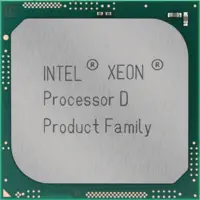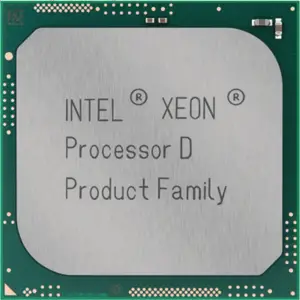From WikiChip
Difference between revisions of "intel/cores/hewitt lake"
| Line 21: | Line 21: | ||
| − | {{ | + | {{future information}} |
| + | |||
| + | == Overview == | ||
| + | {{empty section}} | ||
| + | |||
| + | === Common Features === | ||
| + | {{empty section}} | ||
| + | |||
| + | == Hewitt Lake Processors== | ||
| + | {{empty section}} | ||
| + | |||
| + | == See also == | ||
| + | {{intel broadwell core see also}} | ||
Revision as of 14:50, 1 April 2019
| Edit Values | |
| Hewitt Lake | |
 | |
| General Info | |
| Designer | Intel |
| Manufacturer | Intel |
| Introduction | February 25, 2019 (announced) April 2, 2019 (launched) |
| Microarchitecture | |
| ISA | x86-64 (x86) |
| Microarchitecture | Broadwell (Server) |
| Word Size | 8 octets 64 bit16 nibbles |
| Process | 14 nm 0.014 μm 1.4e-5 mm |
| Technology | CMOS |
| Succession | |
Hewitt Lake (HWL) is codename Intel's single-chip dense low-power processors platform based on the Broadwell microarchitecture, serving as a successor to Broadwell DE. Hewitt Lake are aimed at lower power IoT, networking, and dense edge computing.
Hewitt Lake parts are branded as Intel Xeon D-1600 series processors.
Overview
| This section is empty; you can help add the missing info by editing this page. |
Common Features
| This section is empty; you can help add the missing info by editing this page. |
Hewitt Lake Processors
| This section is empty; you can help add the missing info by editing this page. |
See also
|
• Power
• Performance | |
|
• Power
• Performance |
Facts about "Hewitt Lake - Cores - Intel"
| designer | Intel + |
| first announced | February 25, 2019 + |
| first launched | April 2, 2019 + |
| instance of | core + |
| isa | x86-64 + |
| isa family | x86 + |
| main image |  + + |
| manufacturer | Intel + |
| microarchitecture | Broadwell (Server) + |
| name | Hewitt Lake + |
| process | 14 nm (0.014 μm, 1.4e-5 mm) + |
| technology | CMOS + |
| word size | 64 bit (8 octets, 16 nibbles) + |